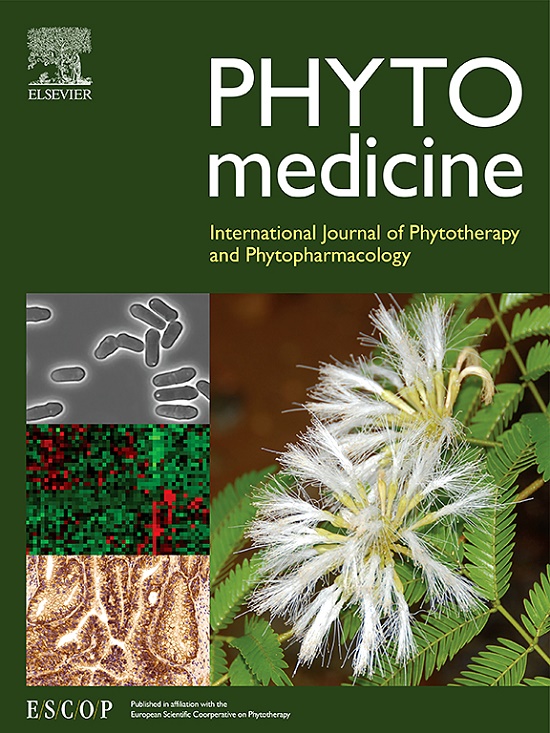Sarsasapogenin stimulates angiogenesis and osteogenesis coupling to treat estrogen deficiency-induced osteoporosis by activating the GPX4/SLIT3/ROBO1 axis
IF 6.7
1区 医学
Q1 CHEMISTRY, MEDICINAL
引用次数: 0
Abstract
Background
Promoting the coupling of osteogenesis and angiogenesis is a crucial strategy for the treatment of postmenopausal osteoporosis (PMOP). Estrogen deficiency induces ferroptosis, which is closely associated with the pathophysiology of PMOP. Sarsasapogenin (SAR) is a natural sapogenin with anti-oxidative effects. However, it is unclear whether SAR has a protective role against the impaired osteogenesis and angiogenesis coupling in PMOP. In this study, we evaluated the efficacy of SAR in estrogen deficiency-induced osteoporosis and explored the underlying mechanisms.
Methods
Bone marrow mesenchymal stem cells (BMSCs) and human umbilical vein endothelial cells (HUVECs) were utilized to assess the in vitro effects of SAR on the coupling of osteogenesis and angiogenesis. In vivo experiments involved bilateral ovariectomy (OVX)-induced osteoporosis in mice and glutathione peroxidase 4 (GPX4)-knockout (KO) mice. Mice were orally administered SAR (5 or 10 mg/kg/d) for a duration of 12 weeks. The direct target of SAR was investigated through molecular docking, a cellular thermal shift assay, and surface plasmon resonance. Additionally, RNA sequencing was employed to elucidate the underlying mechanisms.
Results
SAR treatment improved cell viability and osteogenic differentiation while inhibiting ferroptosis in iron dextran-induced BMSCs. Furthermore, SAR enhanced the production of slit guidance ligand 3 (SLIT3) in these cells, which stimulated angiogenesis by activating its receptor, roundabout human homolog 1 (ROBO1), in HUVECs. An in vitro model of ferroptosis induced by erastin demonstrated that SAR promoted the coupling of osteogenesis and angiogenesis by upregulating the BMSCs-SLIT3/HUVECs-ROBO1 axis. Activation of GPX4 was identified as a contributing factor to the effects of SAR on this coupling. Transfection of GPX4 small interfering RNA (siRNA) in BMSCs negated the impact of SAR on the BMSCs-SLIT3/HUVECs-ROBO1 axis. Additionally, SAR was found to directly interact with GPX4, enhancing protein stability, with an equilibrium dissociation constant of 44.6 μM. Notably, SAR did not increase SLIT3, ROBO1, or indicators of osteogenesis or angiogenesis in GPX4-KO mice.
Conclusions
These findings underscore the significance of restoring the GPX4/SLIT3/ROBO1 axis in promoting the coupling of angiogenesis and osteogenesis. SAR mitigates PMOP, in part, by activating the BMSCs-SLIT3/HUVECs-ROBO1 axis, with GPX4 serving as an upstream signaling modulator responsible for SLIT3 production. Our observations provide experimental evidence supporting the clinical application of SAR in the treatment of PMOP.

Sarsasapogenin通过激活GPX4/SLIT3/ROBO1轴刺激血管生成和成骨耦合治疗雌激素缺乏诱导的骨质疏松症。
背景:促进骨生成和血管生成的耦合是治疗绝经后骨质疏松症(PMOP)的关键策略。雌激素缺乏导致铁下垂,与ppu的病理生理密切相关。Sarsasapogenin (SAR)是一种具有抗氧化作用的天然皂苷元。然而,尚不清楚SAR是否对ppu中受损的成骨和血管生成耦合具有保护作用。在本研究中,我们评估了SAR在雌激素缺乏性骨质疏松症中的疗效,并探讨了其潜在机制。方法:利用骨髓间充质干细胞(BMSCs)和人脐静脉内皮细胞(HUVECs)体外研究SAR对成骨和血管生成耦合的影响。体内实验涉及小鼠双侧卵巢切除术(OVX)诱导的骨质疏松症和谷胱甘肽过氧化物酶4 (GPX4)敲除(KO)小鼠。小鼠口服SAR(5或10 mg/kg/d),持续12周。通过分子对接、细胞热移测定和表面等离子体共振研究了SAR的直接靶点。此外,RNA测序被用来阐明潜在的机制。结果:SAR处理提高了右旋铁聚糖诱导的骨髓间充质干细胞的细胞活力和成骨分化,同时抑制了铁下沉。此外,SAR增强了这些细胞中狭缝引导配体3 (SLIT3)的产生,SLIT3通过激活其受体,环形人同源物1 (ROBO1),在HUVECs中刺激血管生成。体外erastin诱导的铁凋亡模型表明,SAR通过上调BMSCs-SLIT3/HUVECs-ROBO1轴促进骨生成和血管生成的耦合。GPX4的激活被认为是SAR对这种偶联作用的一个促成因素。在骨髓间质干细胞中转染GPX4小干扰RNA (siRNA)可消除SAR对BMSCs- slit3 /HUVECs-ROBO1轴的影响。此外,研究发现,SAR与GPX4直接相互作用,提高了蛋白质的稳定性,其平衡解离常数为44.6 μM。值得注意的是,SAR没有增加GPX4-KO小鼠的SLIT3、ROBO1或成骨或血管生成指标。结论:这些发现强调了恢复GPX4/SLIT3/ROBO1轴在促进血管生成和成骨耦合中的重要意义。SAR通过激活BMSCs-SLIT3/HUVECs-ROBO1轴,GPX4作为上游信号调制器负责SLIT3的产生,在一定程度上减轻了ppop。我们的观察结果为SAR在ppu治疗中的临床应用提供了实验证据。
本文章由计算机程序翻译,如有差异,请以英文原文为准。
求助全文
约1分钟内获得全文
求助全文
来源期刊

Phytomedicine
医学-药学
CiteScore
10.30
自引率
5.10%
发文量
670
审稿时长
91 days
期刊介绍:
Phytomedicine is a therapy-oriented journal that publishes innovative studies on the efficacy, safety, quality, and mechanisms of action of specified plant extracts, phytopharmaceuticals, and their isolated constituents. This includes clinical, pharmacological, pharmacokinetic, and toxicological studies of herbal medicinal products, preparations, and purified compounds with defined and consistent quality, ensuring reproducible pharmacological activity. Founded in 1994, Phytomedicine aims to focus and stimulate research in this field and establish internationally accepted scientific standards for pharmacological studies, proof of clinical efficacy, and safety of phytomedicines.
 求助内容:
求助内容: 应助结果提醒方式:
应助结果提醒方式:


